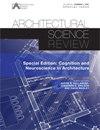建筑设计给痴呆症带来希望
IF 1.8
3区 艺术学
0 ARCHITECTURE
引用次数: 0
摘要
痴呆症患者居住的地方,深刻地影响着他们的幸福、行为、疾病的进程,甚至他们的死亡环境。影响PLWD的环境可能从工作场所、公共场所或自己的家中开始。但随着痴呆症的发展,住宅往往需要改变,以提高护理水平。在最好的情况下,更大程度的依赖意味着更大程度的制度化,这通常意味着“住宅”——真正的机构替代品。与痴呆症相关的制度化意味着与家庭、社区、爱情、激情、爱好、熟悉的地方甚至物质财产的分离。这是我们的父母和祖父母不光彩的最后一章。他们和我们一样,过着充实而有趣的生活。但是这种正常生活环境的损耗对PLWD有什么影响呢?建筑能帮上什么忙?本期《建筑科学评论》特刊致力于探索PLWD设计的循证和理论方法,并认识到建筑不仅仅是PLWD护理的场所,而且是围绕痴呆症诊断的复杂性的关键部分。这与机构护理环境中顽固存在的建筑范例形成鲜明对比,后者的装饰随着时尚和建筑师的想法而变化,但核心设计是由工作人员的有效运作需求驱动的,而不是由工作人员所支持的生活质量驱动的。即使在永久性居住环境中,为改善护理提供而提高的效率也往往使环境变得制度化,不适合居住,并可能使痴呆症的结果更糟(Charras 2021;蔡塞尔2020;Burke and Veliz-Reyes 2021)。痴呆症是器质性神经退化性疾病的总称。最常见的是阿尔茨海默病,通常表现为无法学习新事物和记忆新信息;一种是额叶痴呆,其特征是性格和行为的改变。其他痴呆也有其他症状。无论诊断的特异性如何,痴呆症通常会随着时间的推移而恶化,从而损害抽象思维、判断和语言流畅性等高级认知功能。随着痴呆症的发展,它也经常引起情绪和行为异常(Dowden et al. 2008)本文章由计算机程序翻译,如有差异,请以英文原文为准。
Architectural design gives hope for dementia
The places people living with dementia (PLWD) live in, profoundly affect their happiness, behaviour, the course of their illnesses and even the circumstances of their death. Environments that affect PLWD may start out as workplaces, public spaces or their own homes. But as dementia develops, residences often need to change to allow for increased levels of care. For the best part, greater levels of dependence mean greater institutionalization and often that means ‘residential homes’ – institutional substitutes for the real thing. The institutionalization associated with dementia means increased separation from families, communities, loves, passions, hobbies, familiar places and even their material belongings. An undignified last chapter for our parents and grandparents. People who, like the rest of us, have lived full and interesting lives. But what does this attrition of normal living circumstances do to PLWD? Andwhat can architecture do to help? This special issue of Architectural Science Review is dedicated to an exploration of evidence-based and theoretical approaches to designing for PLWD,with the understanding that architecture is not just the setting where care for PLWD will take place, but it is a critical part of the complexity that surrounds a dementia diagnosis. This comes in contrast to the stubbornly extant paradigms of architecture for institutional care settings, where the decoration shifts with fashion and the architects’ ideas, but the core design is driven by the need for the efficient functioning of staff rather than the quality of life that the staff are there to support. Even in permanent residential settings, efficienciesmade to improve the provision of care tend tomake settings institutional, less liveable and possibly worse for dementia outcomes (Charras 2021; Zeisel 2020; Burke and Veliz-Reyes 2021). Dementia is an umbrella term for organic neural deterioration disorders. The most common is Alzheimer’s Disease, which usually manifests as an inability to learn new things and remember new information; there are the Frontal Dementias, which are marked by personality and behavioural change. Other dementias present with other symptoms also. Regardless of the specificity of diagnosis, the dementias typically worsen with time, to impair higher cognitive functions such as abstract thinking, judgement and verbal fluency. As dementia progresses, it frequently causes emotional and behavioural abnormalities also (Dowden et al. 2008) The progression of symptomatology, along
求助全文
通过发布文献求助,成功后即可免费获取论文全文。
去求助
来源期刊

Architectural Science Review
ARCHITECTURE-
CiteScore
4.80
自引率
8.70%
发文量
34
期刊介绍:
Founded at the University of Sydney in 1958 by Professor Henry Cowan to promote continued professional development, Architectural Science Review presents a balanced collection of papers on a wide range of topics. From its first issue over 50 years ago the journal documents the profession’s interest in environmental issues, covering topics such as thermal comfort, lighting, and sustainable architecture, contributing to this extensive field of knowledge by seeking papers from a broad geographical area. The journal is supported by an international editorial advisory board of the leading international academics and its reputation has increased globally with individual and institutional subscribers and contributors from around the world. As a result, Architectural Science Review continues to be recognised as not only one of the first, but the leading journal devoted to architectural science, technology and the built environment. Architectural Science Review publishes original research papers, shorter research notes, and abstracts of PhD dissertations and theses in all areas of architectural science including: -building science and technology -environmental sustainability -structures and materials -audio and acoustics -illumination -thermal systems -building physics -building services -building climatology -building economics -ergonomics -history and theory of architectural science -the social sciences of architecture
 求助内容:
求助内容: 应助结果提醒方式:
应助结果提醒方式:


